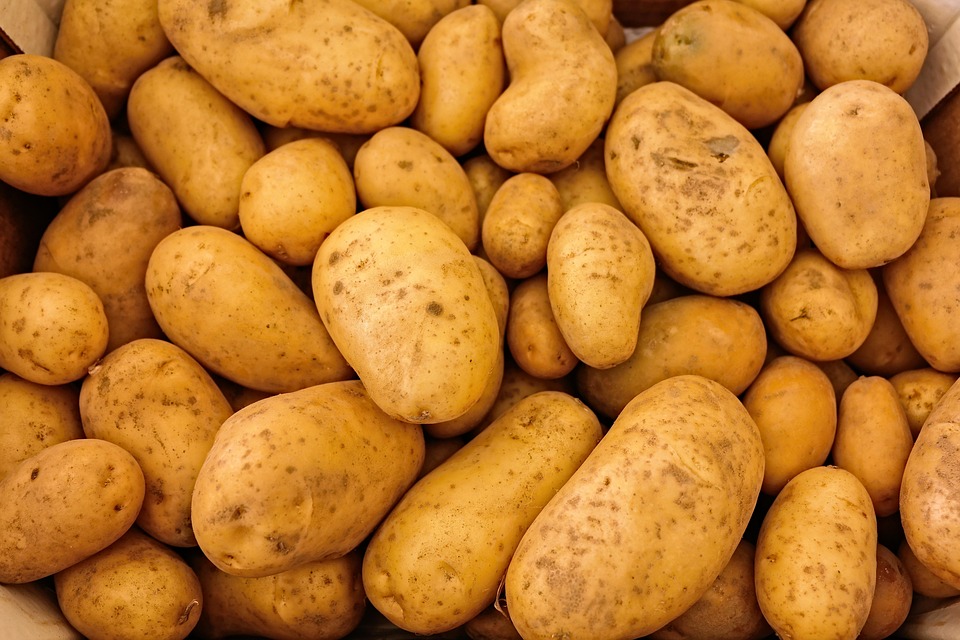Meal Planning Made Simple: Your Go-To Nutrition Food List
In today’s fast-paced world, meal planning has emerged as a crucial strategy for maintaining a healthy lifestyle. Not only does it save time and money, but it also promotes a balanced diet. Whether you are looking to lose weight, maintain your current health, or simply eat better, meal planning can make a significant difference. This article aims to simplify the meal planning process by providing a comprehensive guide to nutrition along with a reliable food list, ensuring your meals are both delicious and nutritious.
The Importance of Meal Planning
Before diving into what foods to include, let’s explore why meal planning is beneficial:
-
Time Efficiency: By planning meals in advance, you can prepare ingredients when you have free time. This reduces the time spent cooking during the week.
-
Cost Savings: Meal planning allows you to buy in bulk, reducing grocery costs. You’ll also be less likely to make impulse purchases.
-
Nutritional Control: By planning meals, you can ensure you’re getting a balanced diet that includes essential nutrients.
-
Reduces Food Waste: With a plan in place, you’ll have a clear idea of what you need to buy, minimizing excess food spoilage.
- Simplifies Choices: With meals pre-planned, decision fatigue is reduced, leading to healthier choices throughout the week.
The Basics of Nutrition
Understanding nutrition is essential for effective meal planning. Here’s a breakdown of macronutrients and micronutrients:
Macronutrients
-
Carbohydrates: The body’s primary source of energy. They can be simple (sugars) or complex (starches).
-
Proteins: Essential for muscle repair and growth, proteins are made up of amino acids. Good sources include meat, dairy, and legumes.
- Fats: Necessary for hormone production and nutrient absorption, healthy fats include avocados, nuts, seeds, and olive oil.
Micronutrients
These are vitamins and minerals required in smaller amounts but are vital for good health. Foods rich in micronutrients include:
- Vitamins: Found in fruits, vegetables, and whole grains.
- Minerals: Found in meat, dairy products, nuts, and seeds.
Creating a Meal Plan
Step 1: Set Your Goals
Define what you want to achieve with your meal planning. Are you aiming for weight loss, muscle gain, or simply healthier eating?
Step 2: Choose Your Meals
Select recipes for breakfasts, lunches, dinners, and snacks. Make sure they align with your nutritional goals.
Step 3: Make a Grocery List
Once you have your meals planned, create a grocery list based on the ingredients needed.
Step 4: Prep Ahead
Plan a day for meal prep. Cook and store meals in portioned containers for the week ahead.
Step 5: Stay Flexible
Life is unpredictable. It’s important to stay flexible with your meal plans and make adjustments as needed.
Your Go-To Nutrition Food List
Proteins
-
Lean Meat: Chicken, turkey, and lean cuts of beef.
-
Fish: Salmon, tuna, and other fatty fish rich in omega-3s.
-
Legumes: Lentils, chickpeas, and black beans are excellent plant-based protein sources.
-
Dairy: Greek yogurt, cottage cheese, and low-fat milk provide both protein and calcium.
- Nuts and Seeds: Almonds, walnuts, chia seeds, and flaxseeds are high in protein and healthy fats.
Carbohydrates
-
Whole Grains: Brown rice, quinoa, oats, and whole wheat bread provide sustained energy.
-
Fruits: Berries, bananas, apples, and oranges are high in vitamins and fiber.
-
Vegetables: Leafy greens (spinach, kale), cruciferous vegetables (broccoli, cauliflower), and colorful veggies (carrots, bell peppers).
- Starchy Vegetables: Sweet potatoes, potatoes, and corn can be a good source of complex carbohydrates.
Fats
-
Healthy Oils: Olive oil, coconut oil, and avocado oil for cooking.
-
Avocados: A great source of heart-healthy fat.
- Nut Butters: Almond butter and peanut butter provide healthy fats and protein.
Snacks
-
Fruits and Vegetables: Snack on carrot sticks, apple slices, or berries.
-
Whole-Grain Crackers: Pair with hummus or cheese for a nutritious snack.
-
Greek Yogurt: High in protein and can be enhanced with fruits or nuts.
- Popcorn: A whole grain snack that can be seasoned in various ways.
Meal Planning Strategies
Implementing certain strategies can enhance the effectiveness of your meal planning.
Batch Cooking
Cook a large batch of grains, proteins, or vegetables at once. This saves time and makes it easy to mix and match during the week.
Theme Nights
Consider having theme nights like Taco Tuesday or Pasta Wednesday. This makes meal planning more fun and simplifies the decision-making process.
Seasonal Cooking
Utilize seasonal produce. They are often fresher, more affordable, and packed with nutrients.
Stock Healthful Staples
Keep your pantry stocked with essentials like canned legumes, whole grains, frozen vegetables, and spices. This allows for flexibility in meal planning.
Monitor Portions
Pay attention to portion sizes to ensure you’re not overeating. Use measuring cups or a food scale if necessary.
Common Mistakes to Avoid
As you embark on your meal planning journey, be mindful of common pitfalls:
-
Overcomplicating Meals: Keep recipes simple, especially if you’re new to cooking.
-
Ignoring Portion Sizes: Larger servings can lead to overeating.
-
Neglecting Variety: Eating the same meals repeatedly can lead to boredom. Make sure to include a variety of foods.
-
Not Preparing Snacks: Healthy snacks are crucial for maintaining energy and staving off hunger.
- Setting Unachievable Goals: Start small, especially if you’re new to meal planning.
Tools to Aid Meal Planning
Several digital resources and apps can simplify meal planning:
-
Meal Planning Apps: Apps like Plan to Eat or Paprika can help you store recipes, make shopping lists, and keep track of your inventory.
-
Recipe Websites: Websites like AllRecipes and EatingWell provide recipes tailored to various dietary needs.
- Grocery Store Apps: Some grocery stores have apps that can help with shopping lists and promotions.
Sample Meal Plan
To give you an idea of how to implement the food list, here’s a simple 5-day meal plan:
Day 1
- Breakfast: Greek yogurt with berries and a drizzle of honey.
- Lunch: Chicken salad with mixed greens, avocado, and vinaigrette.
- Dinner: Grilled salmon with quinoa and steamed broccoli.
Day 2
- Breakfast: Oatmeal topped with sliced bananas and almond butter.
- Lunch: Quinoa bowl with black beans, cherry tomatoes, and cilantro.
- Dinner: Stir-fried shrimp with mixed vegetables over brown rice.
Day 3
- Breakfast: Smoothie with spinach, banana, and protein powder.
- Lunch: Turkey wrap with whole grain tortilla, lettuce, and hummus.
- Dinner: Baked sweet potato filled with lentils and taco spices.
Day 4
- Breakfast: Scrambled eggs with spinach and tomatoes.
- Lunch: Grilled vegetable and quinoa salad.
- Dinner: Whole wheat pasta with marinara sauce and a side salad.
Day 5
- Breakfast: Chia seed pudding with coconut milk and mixed fruit.
- Lunch: Chickpea salad with feta and cucumbers.
- Dinner: Stuffed bell peppers with ground turkey and brown rice.
Conclusion
Meal planning is a valuable skill that can significantly improve your dietary habits and overall health. By using the practical strategies and food list provided in this article, you can simplify the process and make healthier choices. Remember to stay flexible, be open to experimentation, and enjoy your meals! Whether you’re planning meals for just yourself or the entire family, the key is to keep it simple, balanced, and enjoyable.
References
- Nutrition Basics – USDA
- Meal Planning Tips – Academy of Nutrition and Dietetics
- Healthy Eating Index – USDA


























Add Comment